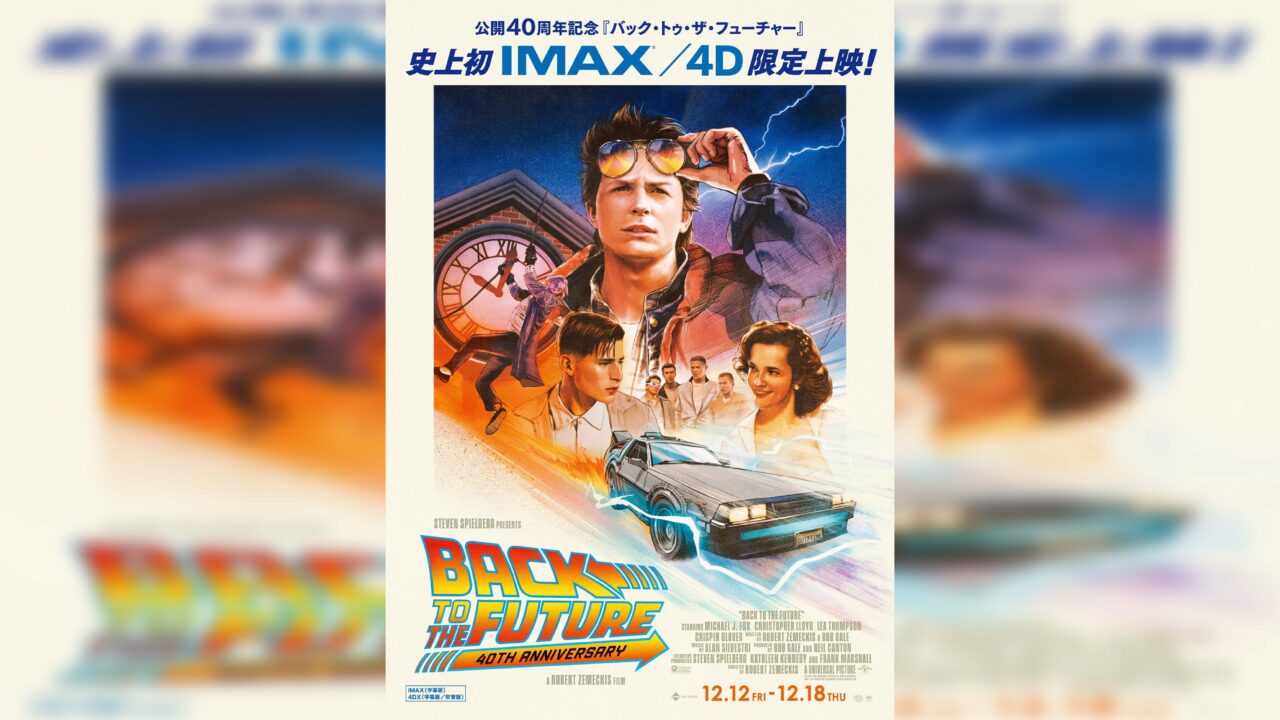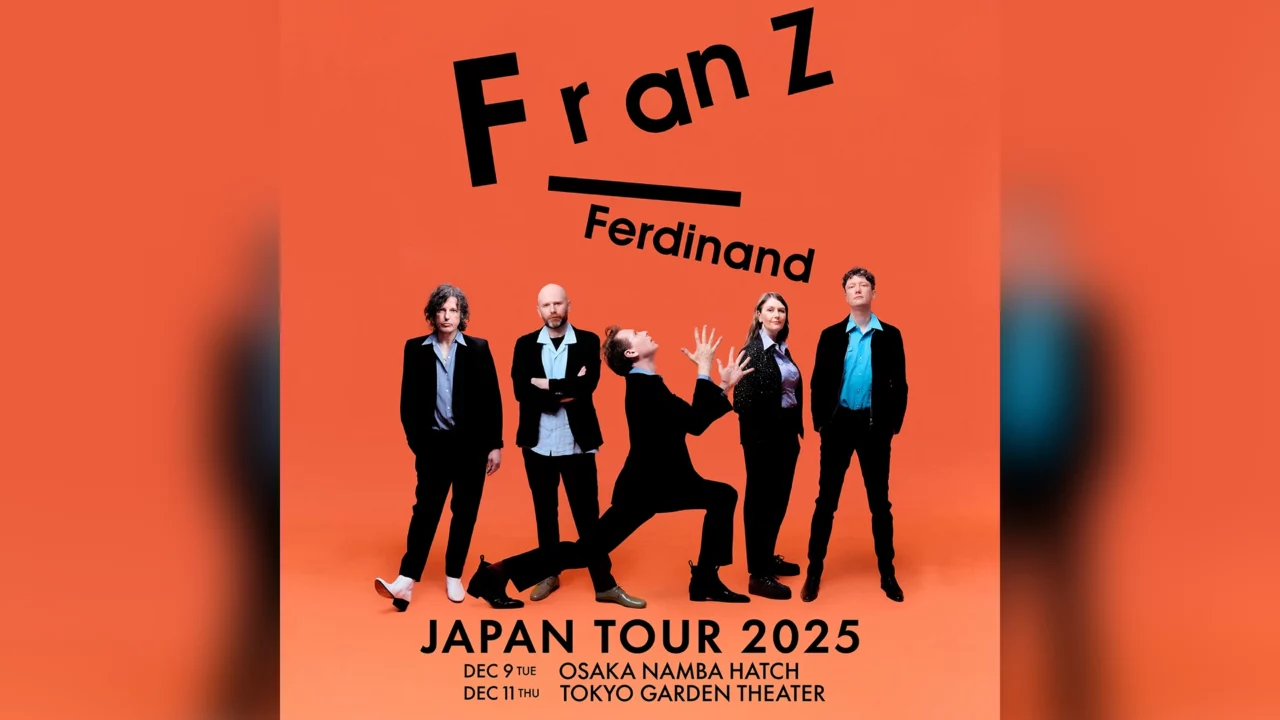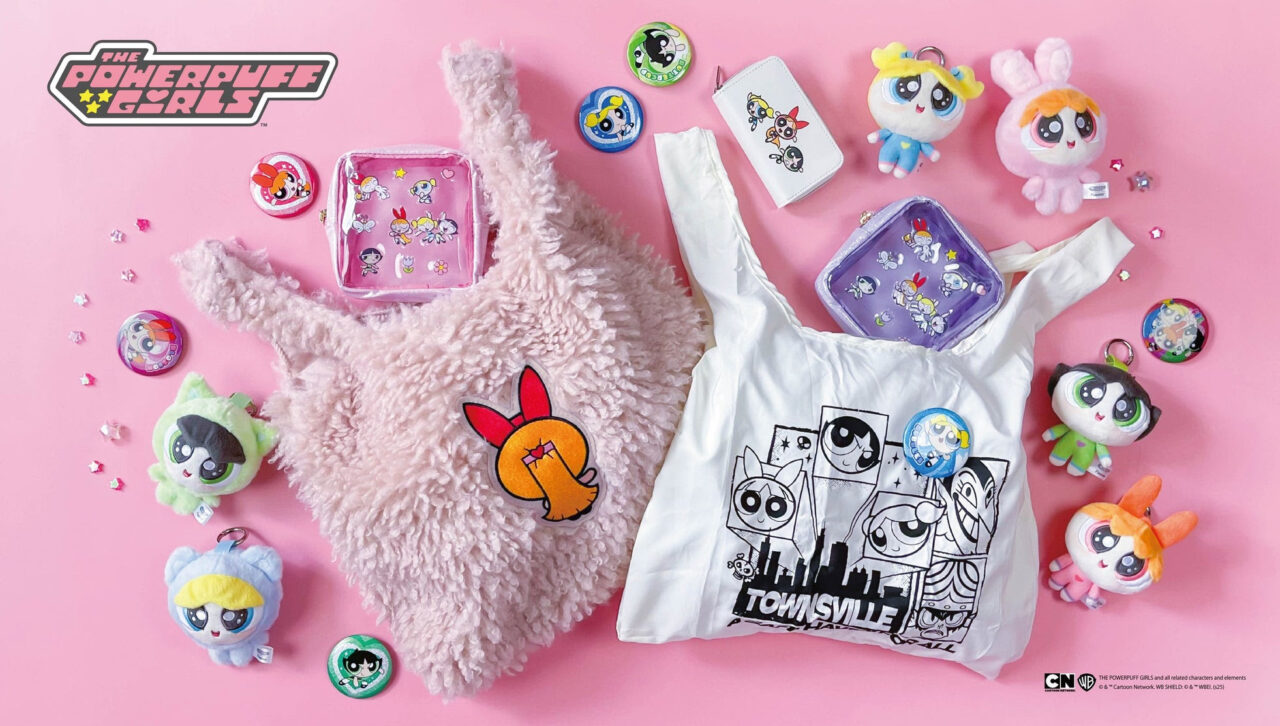At PLAY! MUSEUM in Tachikawa, Tokyo, a daring exhibition titled “ONE PIECE ONLY” is breaking the mold. While you might expect a showcase of iconic ONE PIECE scenes, original artwork, and themed café delights, this exhibit offers something far more unexpected. It immerses visitors in the monumental journey behind the scenes of manga creation, from the artist’s sketches to the lesser-known stages of printing, binding, and transforming a weekly serialization into a beloved comic book. Rather than focusing on the world of ONE PIECE, this exhibition celebrates the unseen labor that brings the adventure to life — a tribute to the crew who made it possible. It’s not just about manga; it’s about the voyage itself.
© Eiichiro Oda / Shueisha Inc.
INDEX

INDEX
A Grand Scroll Unfolds: Every Page of ONE PIECE on Display
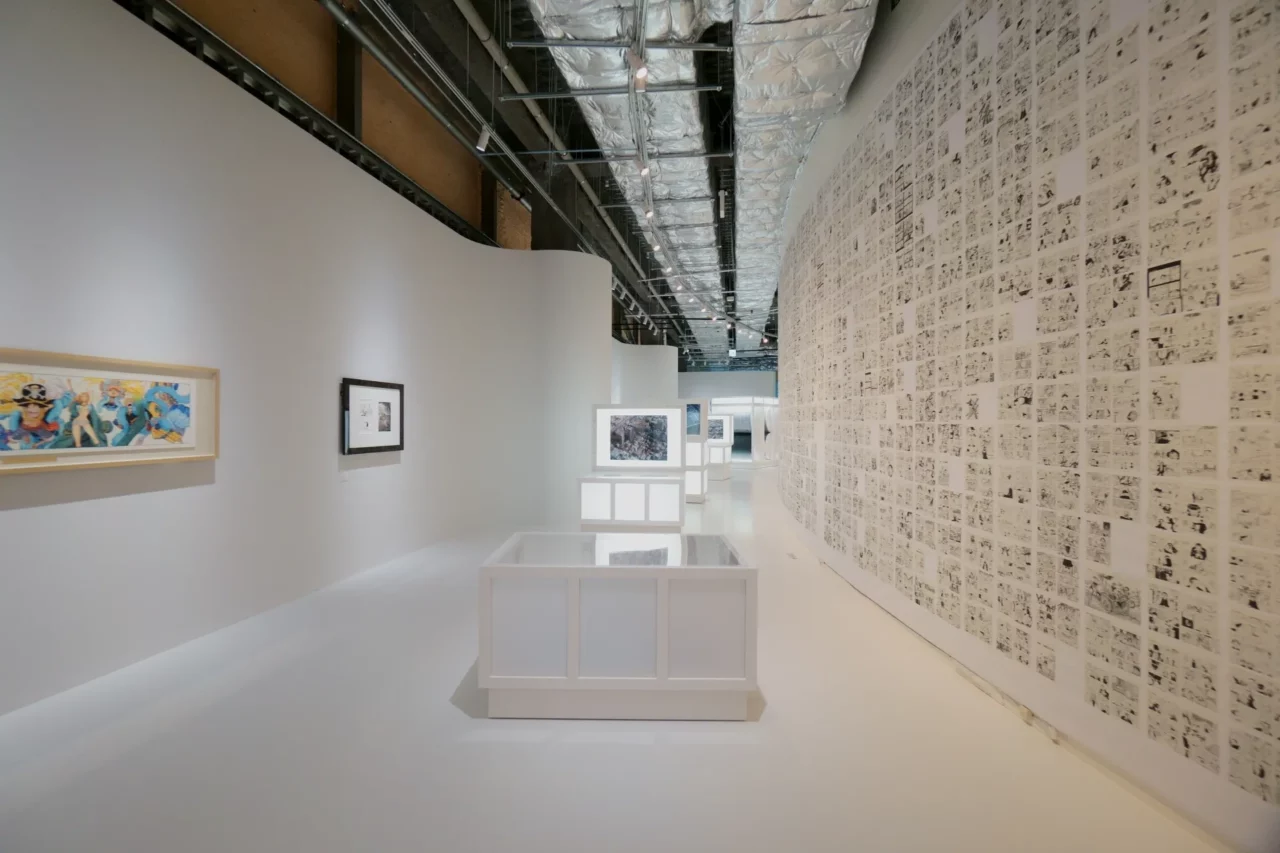
The exhibition begins with the overwhelming presence of “The Wall.” This massive display features every page from ONE PIECE volumes 1 to 109, meticulously arranged across the wall. Starting from the entrance and curving dramatically through the space, it stretches approximately 3.6 meters high and 140 meters long, leading all the way to the merchandise section—an uninterrupted scroll of art.
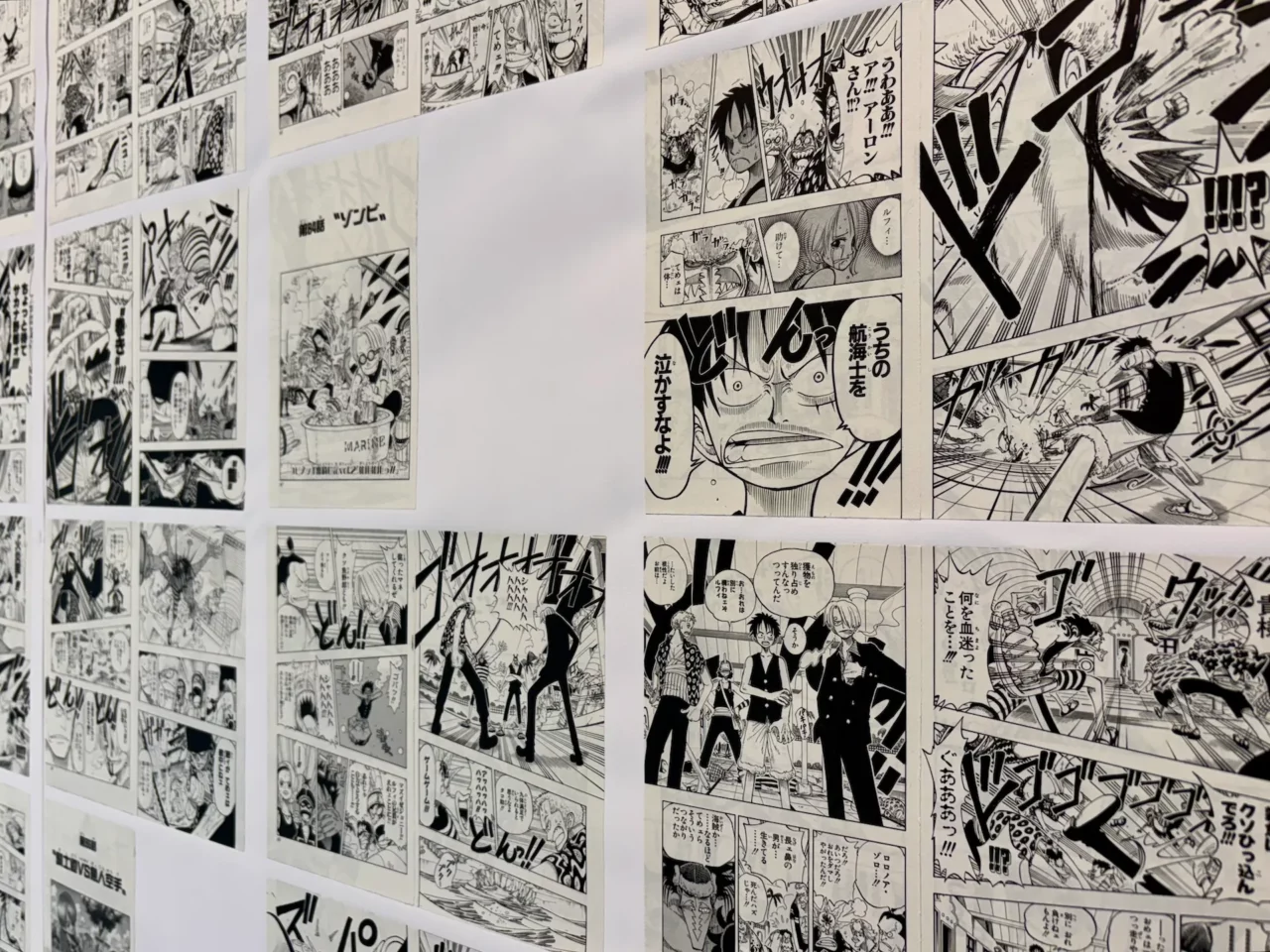
If you look closely, you’ll notice that this “The Wall” is made up of actual pages from the commercial manga, carefully taken apart and pasted one by one. Instead of simply printing the archive data from Shueisha’s collection, eight staff members spent about a month putting it all together. According to Masashi Okamoto, the curator of the exhibition and producer of “Shueisha Manga Art Heritage,” “I thought it would be more interesting to have the same physical pages that you all own.” Indeed, the familiar texture of the paper and the smell of the ink strongly personalize the experience of this exhibition. For those who own the entire set of ONE PIECE, this is like having your own universe at home.
INDEX
Transforming Manga into Art with Full-Force Printing
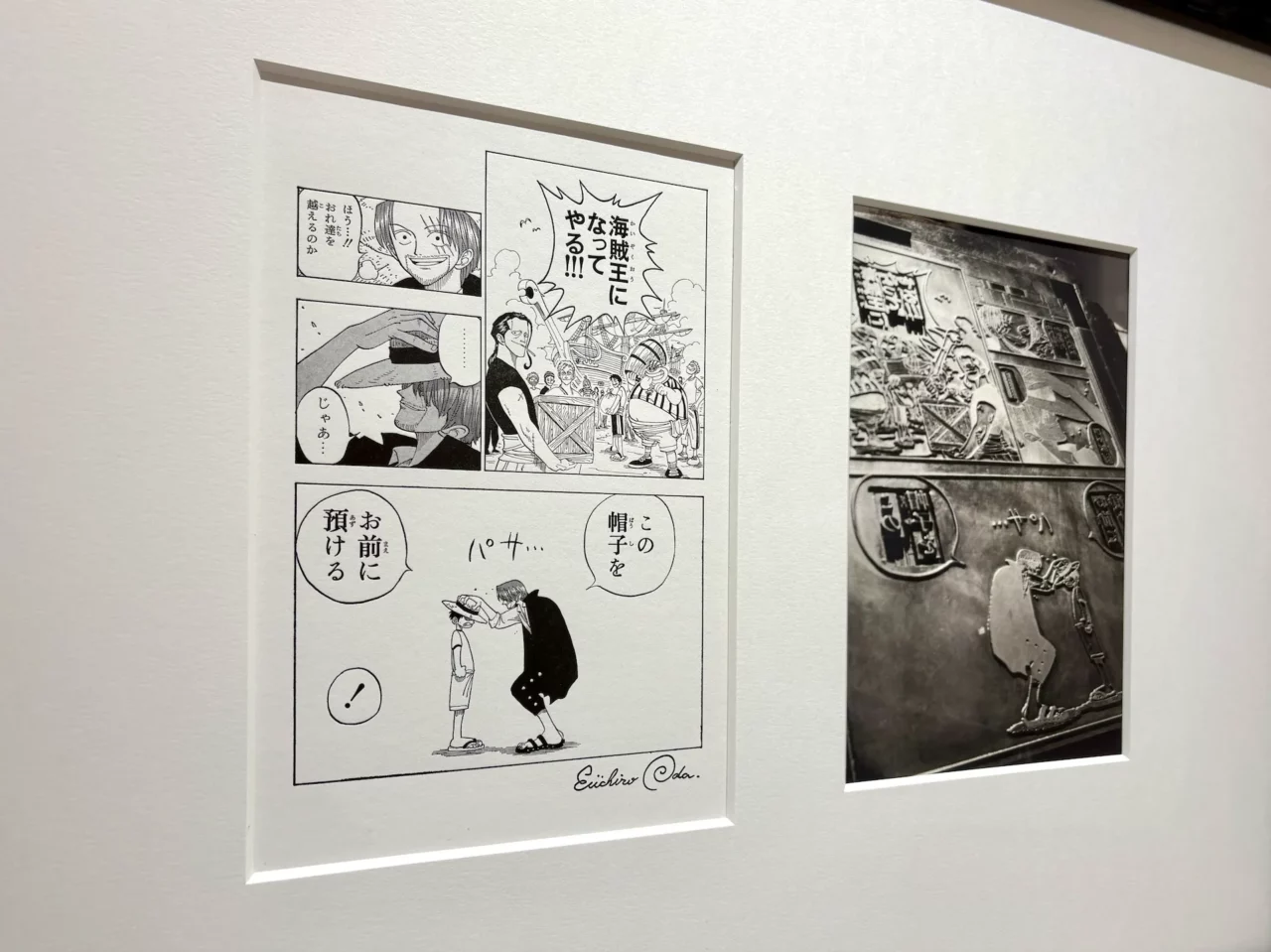
On the other hand, there are also unfamiliar printing methods. The exhibition is curated by “Shueisha Manga Art Heritage,” a project by Shueisha dedicated to preserving manga as an art form for future generations. As part of this initiative, they create and sell “manga prints” produced with high-quality materials and craftsmanship through a website and galleries. The photo shows a special print made using traditional letterpress printing with a metal plate. The faint indentations left by the plate add significant depth and enhance the impact of the scene. It made me realize that the word “impression” in “impressionistic” originally referred to “pressing to leave a shape or color.”
By the way, according to the official website of this project, the size of manga original drawings (B4) is almost the same as that of ukiyo-e (Mino edition). I suddenly realized that the boundary I had assumed between manga and art became almost invisible after reading that sentence.
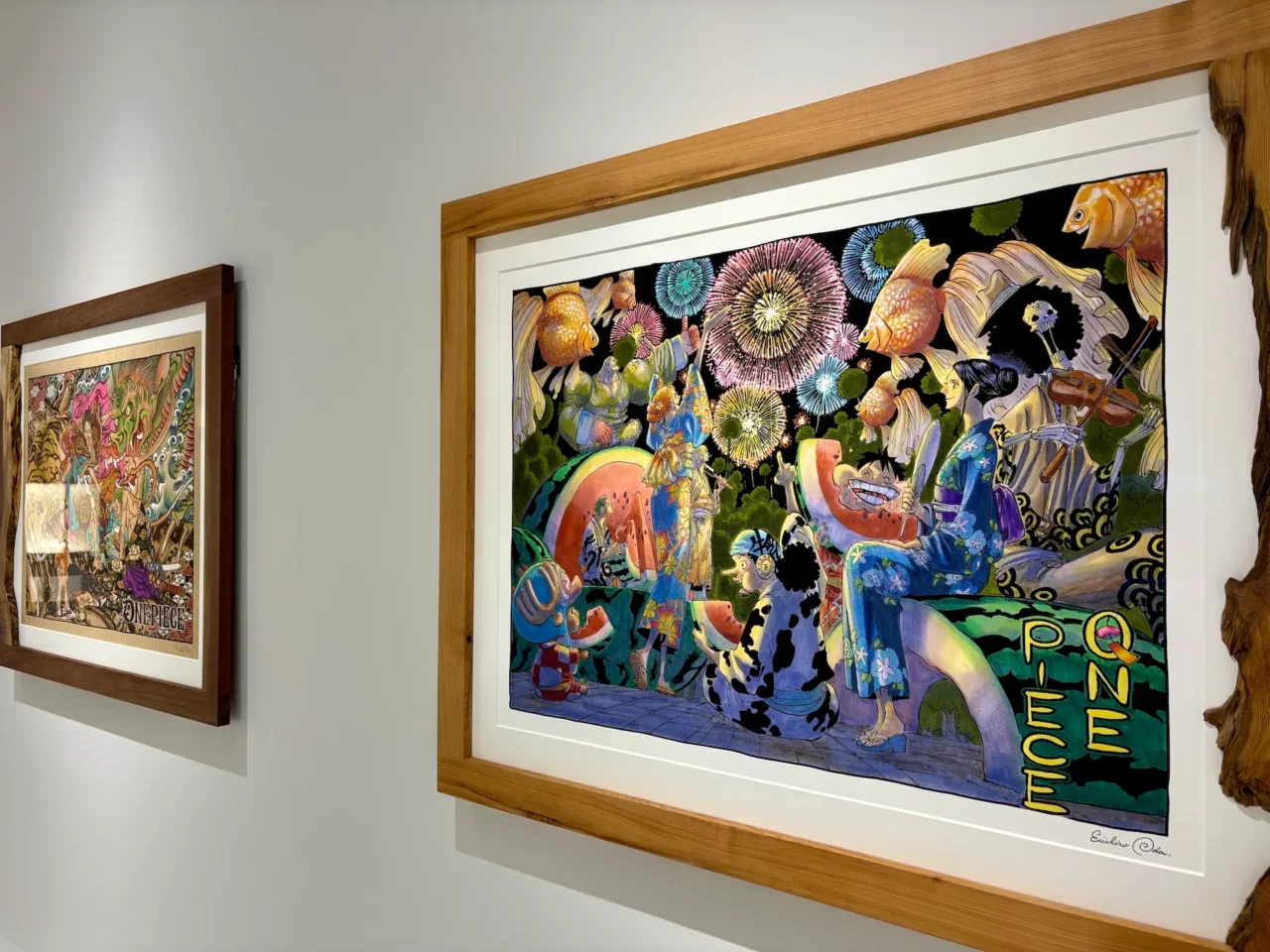
Similarly, a range of ultra-high-quality color works are on display, offering a visual delight. The vivid colors are so striking that they could easily be mistaken for original artwork.
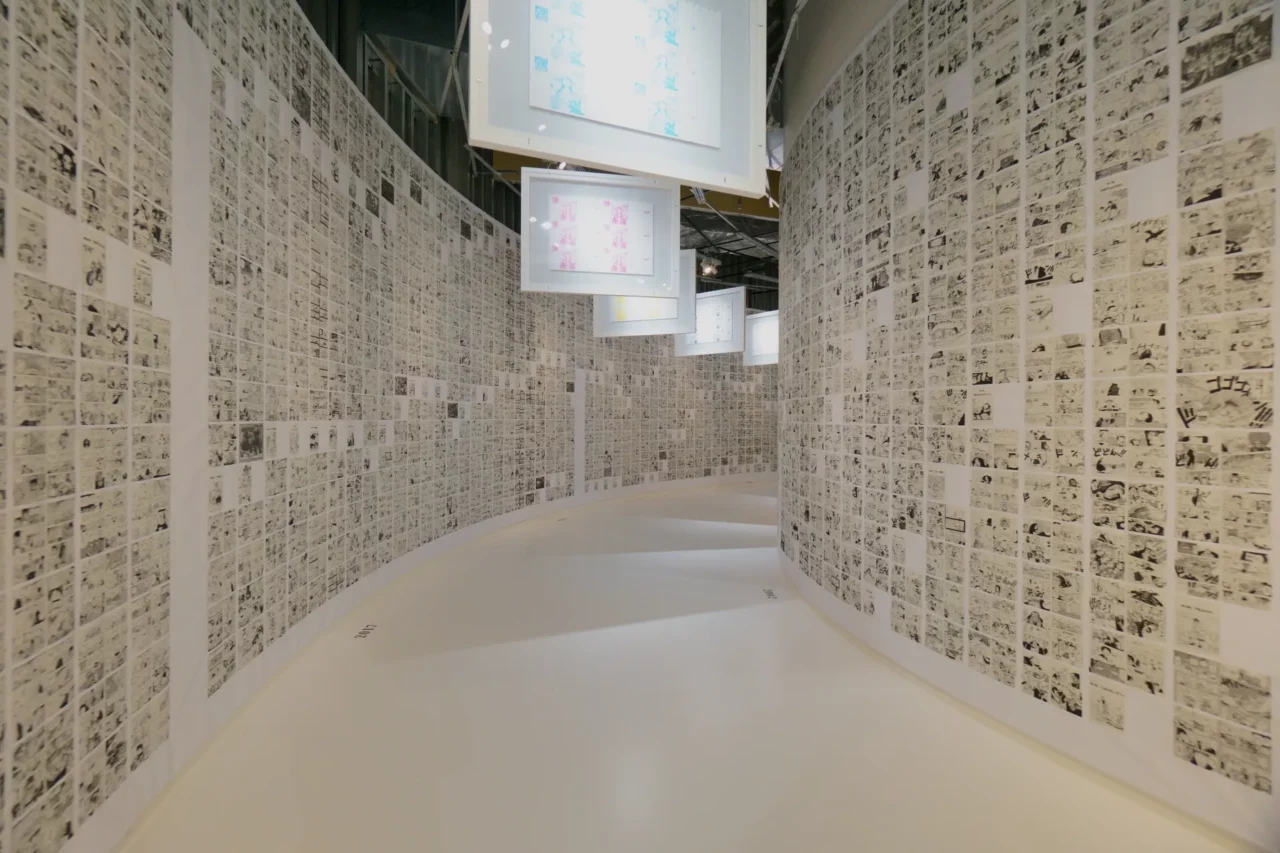
Following “The Wall,” you proceed further into the exhibition, where suspended from the ceiling are the seven color plates used to print the cover of One Piece‘s 100th volume. Typically, Jump Comics covers are printed with five colors—cyan, magenta, yellow, black, and fluorescent pink. However, to capture the colors of this milestone 100th volume, two additional colors, fluorescent blue and fluorescent yellow, were added, making it a seven-color process to fully realize the vibrancy of the original artwork. Seen this way, the multicolor printing has an almost ukiyo-e quality to it—an intriguing parallel.
INDEX
Tracing the Creative Journey: A Treasure Trove of Process
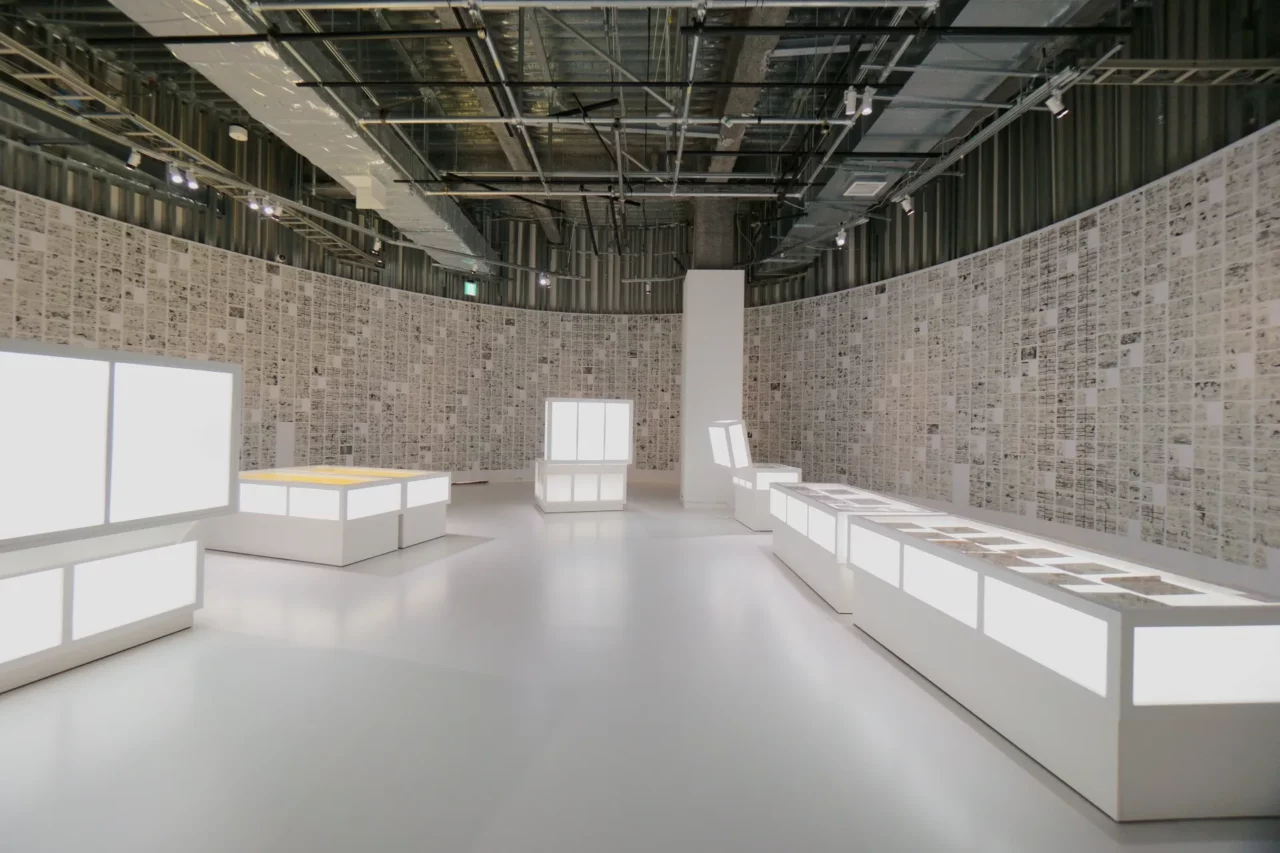
Eventually, visitors arrive at an oval exhibition space loosely encircled by “The Wall.” This immersive experience, surrounded by ONE PIECE on all sides, is truly overwhelming. The rhythm of over 1,000 serialized chapters becomes tangible, allowing us to grasp the sheer scope of the author’s unyielding routine. Daisuke Kusakari, producer at PLAY!, mentioned that it’s interesting to observe how frequently the iconic “Don!” sound effect appears in the series. Following the variations of “Don! Don! Dodon!” every few pages creates a strange, exhilarating rhythm—like listening to a musical beat.
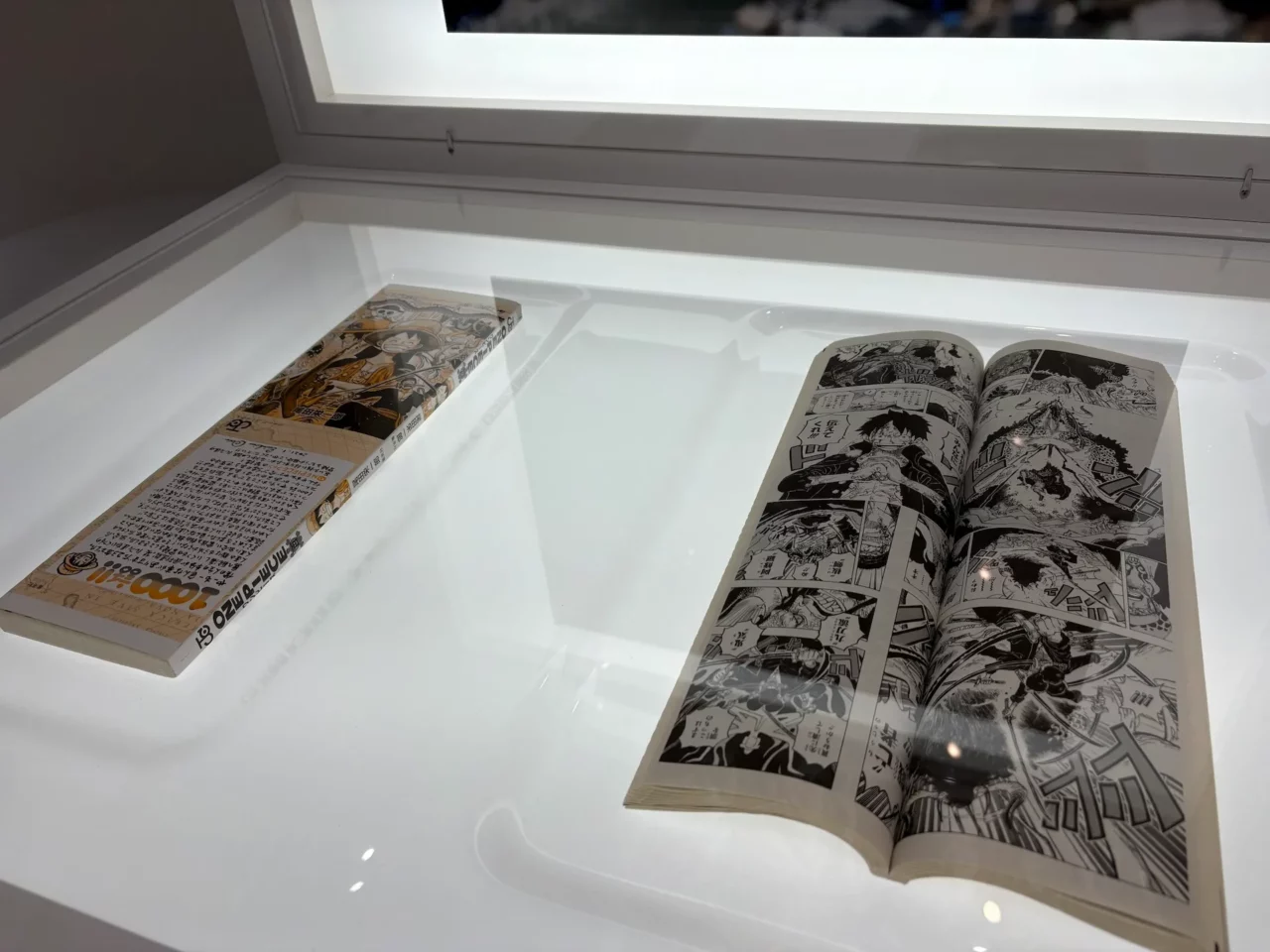
Throughout the venue, display cases styled as treasure chests serve as light boxes. These “treasure chests” lead visitors on a reverse journey through the production stages as they progress from the exhibition entrance toward the end. Starting with the finished comic books as they reach readers, the journey moves backward to the pre-trimmed double-book sheets (referred to by Okamoto as “Two-Piece” rather than One Piece), incredibly intricate color proofs, the resin plates used for letterpress rotary printing of Weekly Shonen Jump, and even the original film used to create these plates.
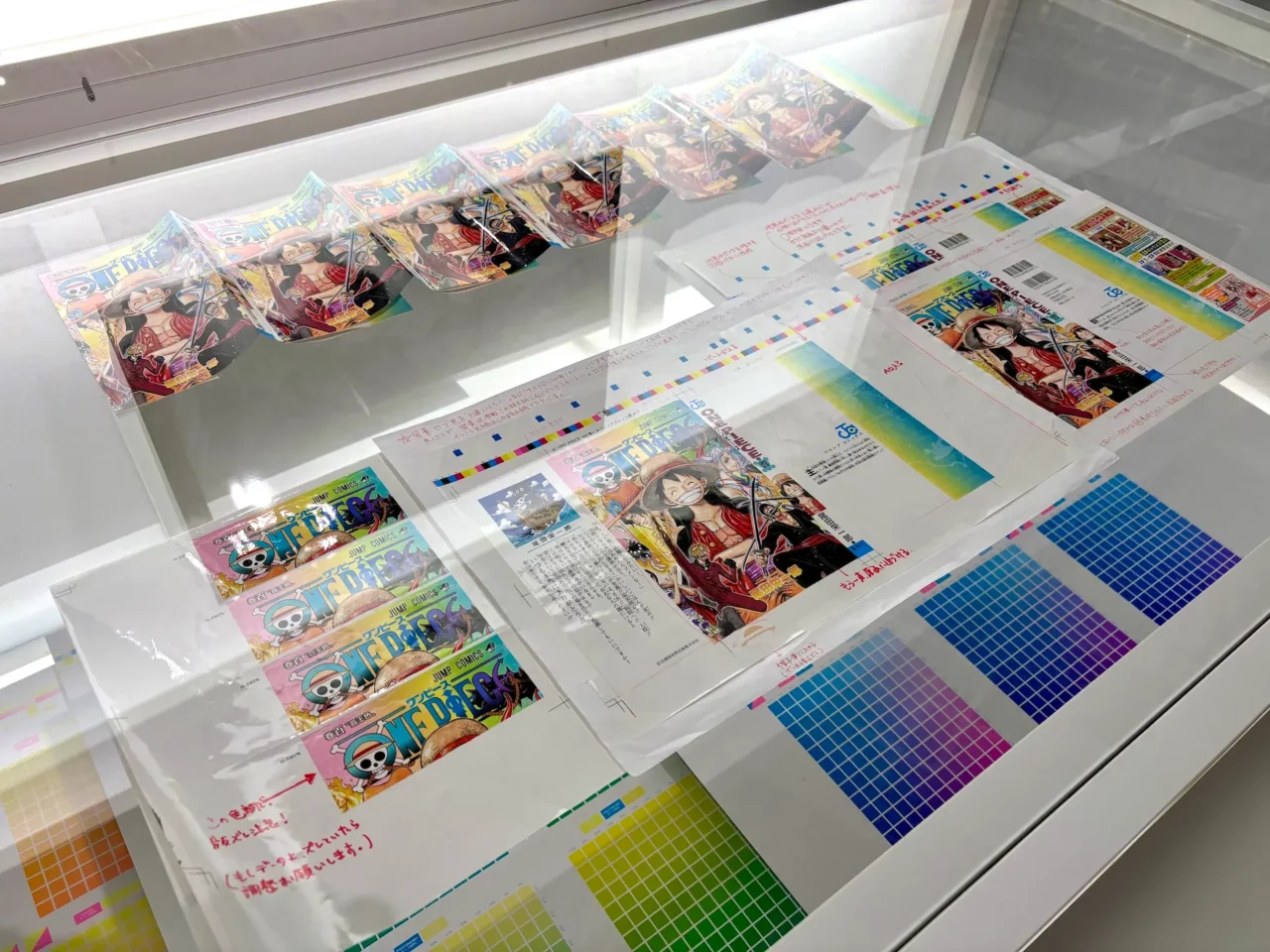
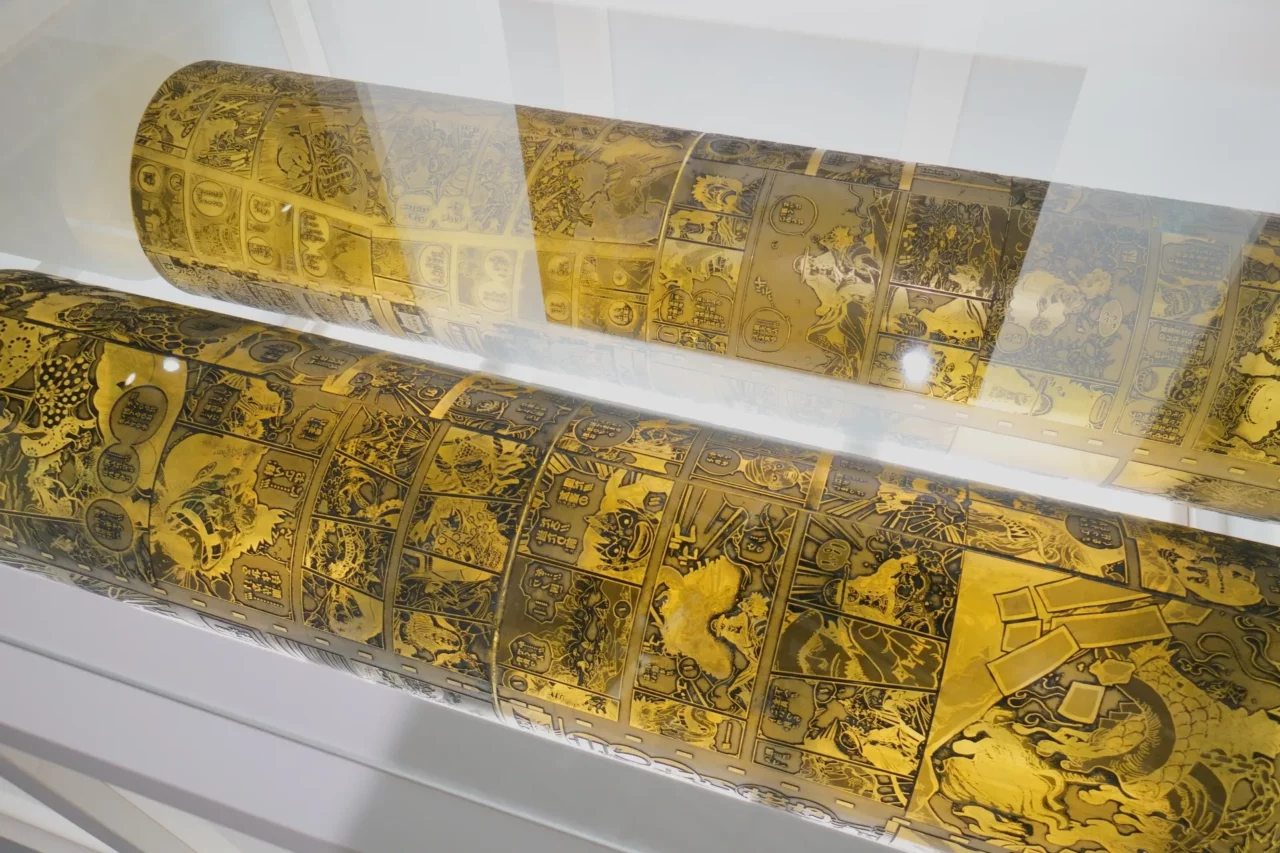
The more you learn about each detail, the more fascinating it becomes, yet there’s no need to understand every process down to the mechanics. What truly matters is feeling the intensity and depth that lies within.
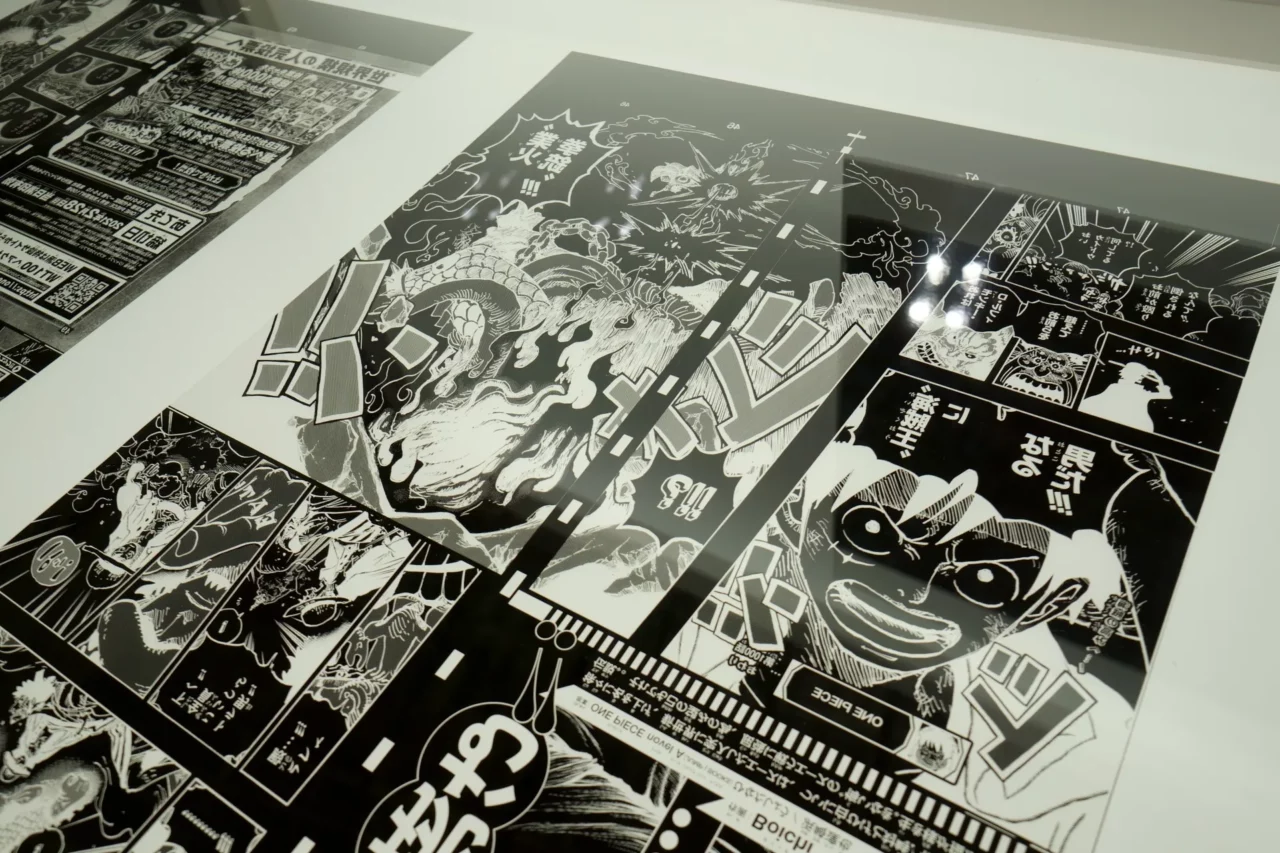
The exhibition highlights the milestones of One Piece‘s 1000th chapter and 100th volume. However, some of the printing techniques used back in 2021, when the 1000th chapter was published, have already been replaced by newer technology as of 2024. In today’s Weekly Shonen Jump, for example, the yellow resin plates and production films featured in the exhibit are no longer used. Such is the nature of technology; what was mainstream just recently can disappear astonishingly quickly. This exhibition might also serve as a way to recognize and remember those now-retired methods.
INDEX
Full Circle: Returning to Eiichiro Oda’s Creative Space

The production process now takes us beyond the factory and publisher, tracing all the way back to the hands of the artist. Here, visitors can thoroughly enjoy the original artwork and storyboard for Chapter 1000. The handwritten manuscript particularly brings the presence of the creator into sharp focus. Just thinking about the fact that such dense work is being produced every week is almost mind-blowing.
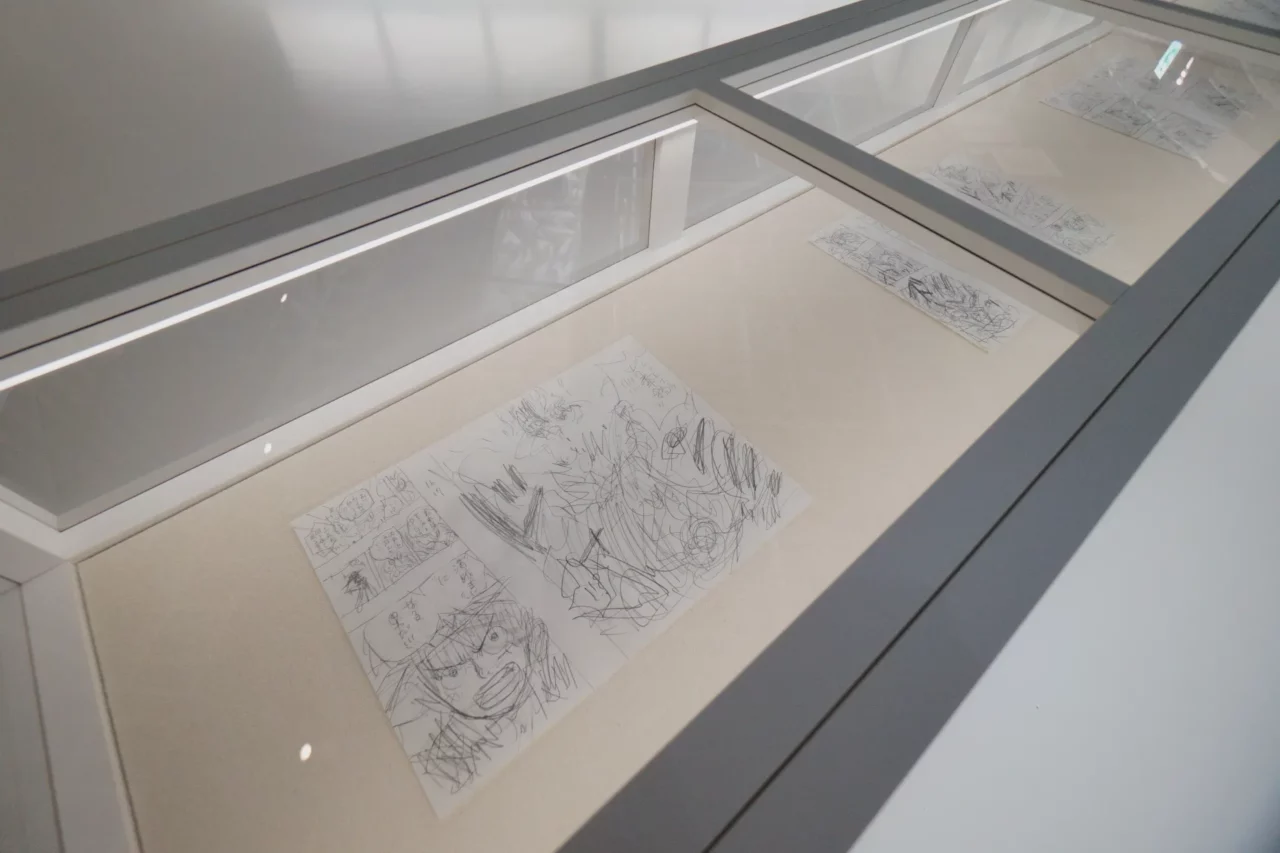
It’s fascinating to closely compare the storyboard and the original artwork, as you can spot areas where the details have been changed between the two.
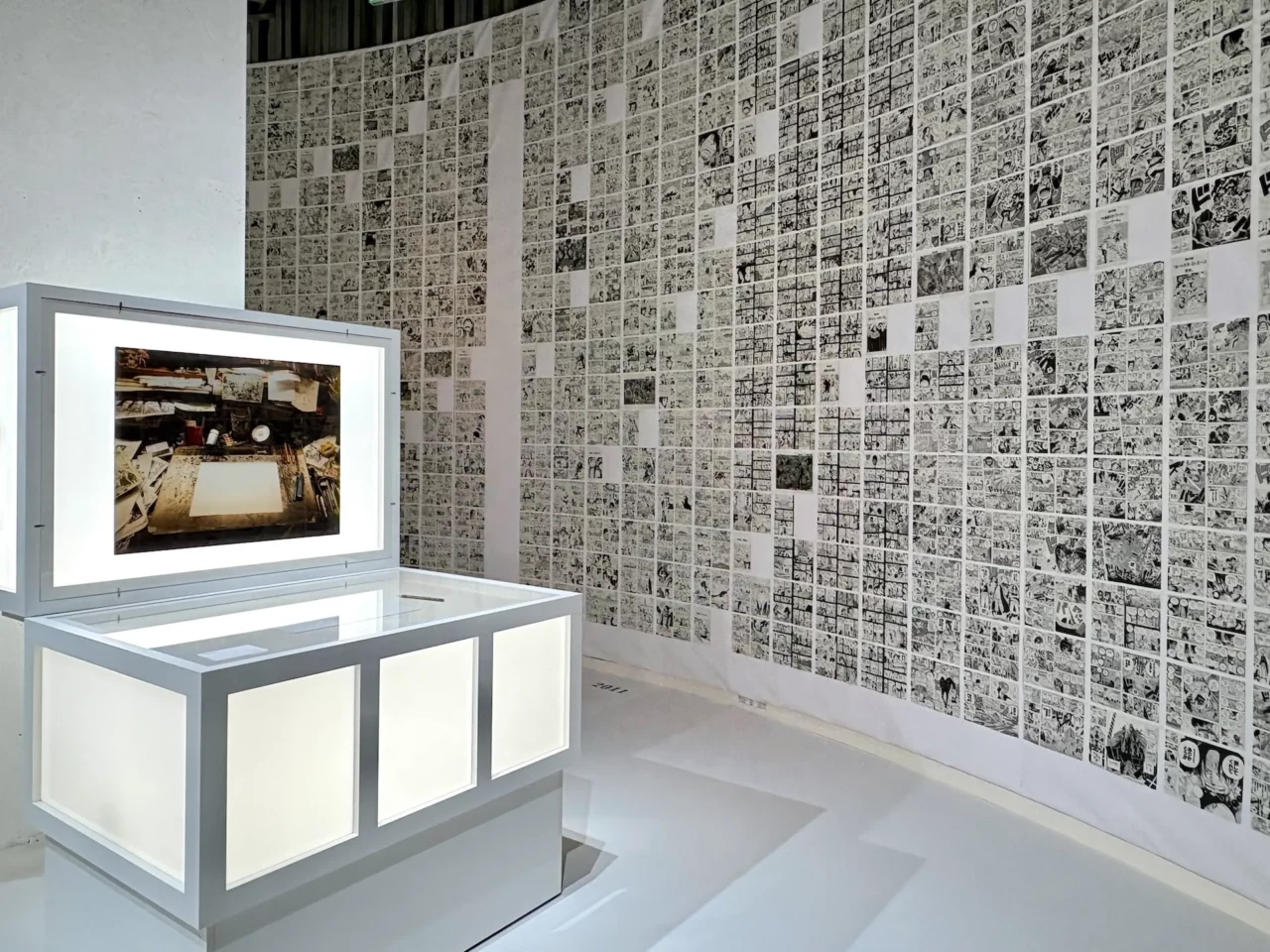
The final treasure chest showcases a photograph of Eiichiro Oda’s desk—the place where everything began—alongside a “B” pencil, the same kind he uses, and a blank sheet of drawing paper. After following the journey of immense creativity displayed in “The Wall,” arriving at this desk feels serene, almost sacred. It was an exhibit that seemed to silently declare, “This is the power of human imagination,” compelling me to stand in quiet admiration, completely captivated.
INDEX
A Sky-Tinted Expression of Love
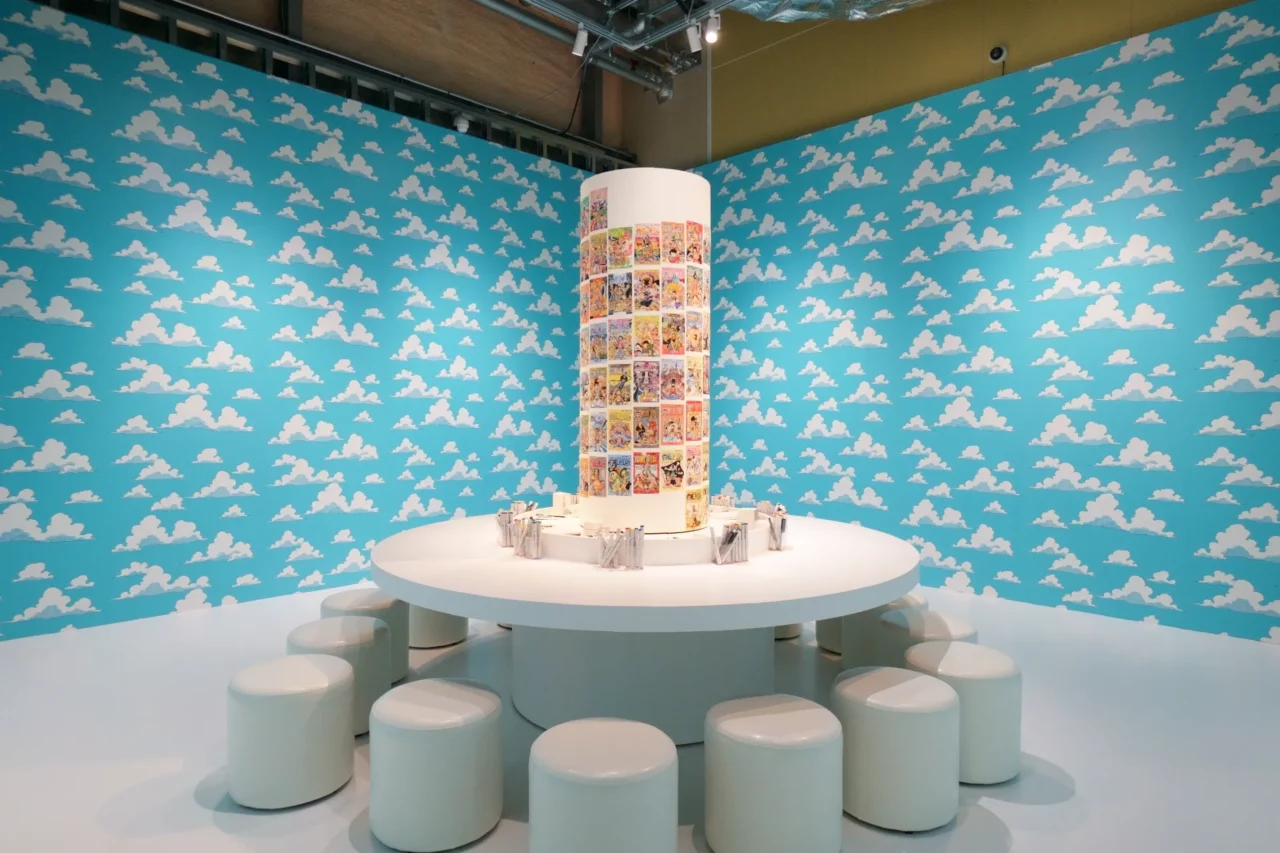
Just as there is a reader’s section at the end of the comic volumes, this exhibition also features an interactive corner for visitors. In a small room surrounded by skies and clouds reminiscent of those depicted in ONE PIECE, attendees can create fan art on the provided paper. The paper is comic book-sized, and colored markers—the same type used by Eiichiro Oda—are supplied. The completed fan art can be displayed as a “work” in a neighboring golden room. This spot seems to become more enjoyable as the exhibition progresses into its later stages.
INDEX
The Mystery of “Emo” Printing

The exhibition’s grand finale is an 8K high-speed camera video installation called “The Factory,” showcasing the printing and bookbinding processes. There are two 15-minute videos: one on the making of Weekly Shonen Jump and another on the production of Jump Comics. Although the idea of watching 15 minutes of printing initially seemed surprising, the time passed in an instant once the footage began. Beyond its educational, field-trip-like intrigue, the video was emotionally powerful. It captured the intense passion of everyone who has contributed to ONE PIECE over the years. The high-speed printing machines seemed to embody the readers’ own passion and eagerness to “see and read” the work. It felt as if the story itself moves forward, propelled by these tailwinds.
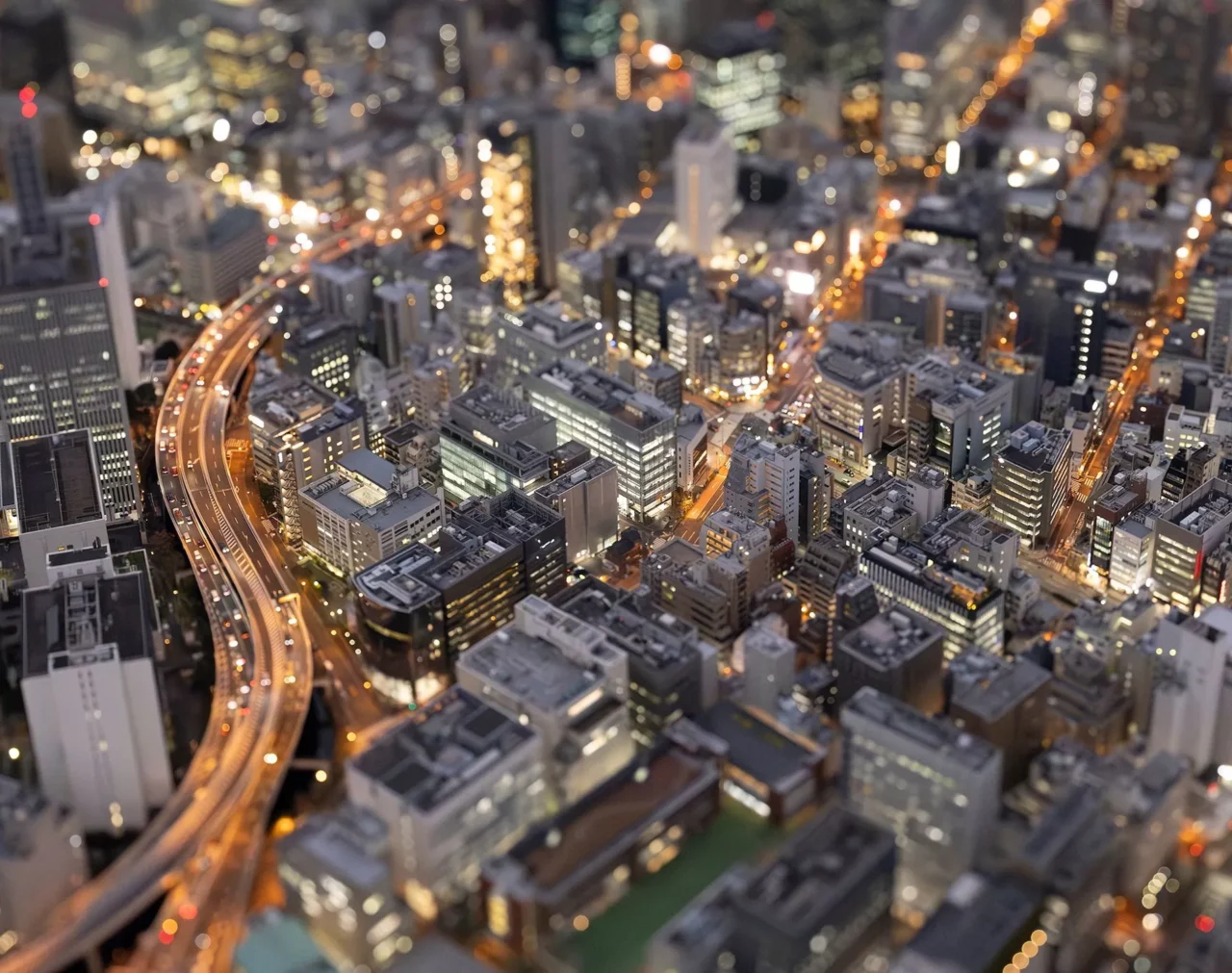
In striking contrast to the meticulously close-up footage, are the aerial photographs by Naoki Honjo, displayed throughout the exhibition. The subjects of these photos are buildings related to Shueisha and the printing factories, among others. Honjo’s unique style of capturing urban landscapes as if they were miniatures felt perfectly suited to this exhibition. After all, miniaturizing something always signifies something important. It’s a way of folding away stories that will eventually conclude, or technologies and jobs that will one day change, keeping them small and preserved in the corner of one’s heart. It seemed as if the curator’s wishes were embedded in this sentiment.
INDEX
Featured Merchandise: The “Gold Nugget”
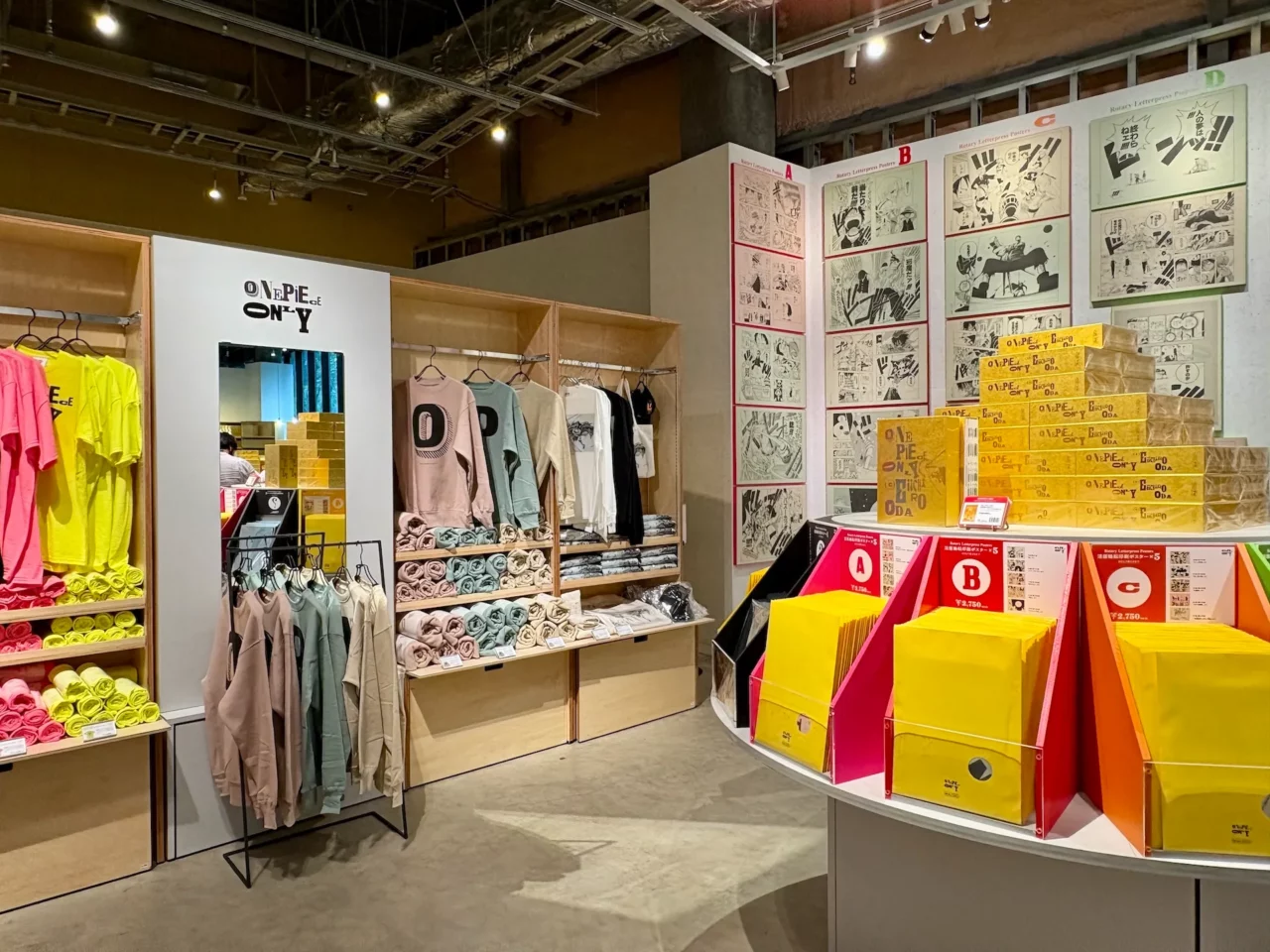
Shopping at the museum shop after the exhibition is just as enjoyable. The posters of iconic scenes, printed using letterpress rotary printing, are made on the same paper as Weekly Shonen Jump and come packaged in a yellow manuscript envelope—such a thoughtful detail. The apparel items also feature color schemes inspired by ink and the signature Jump paper.
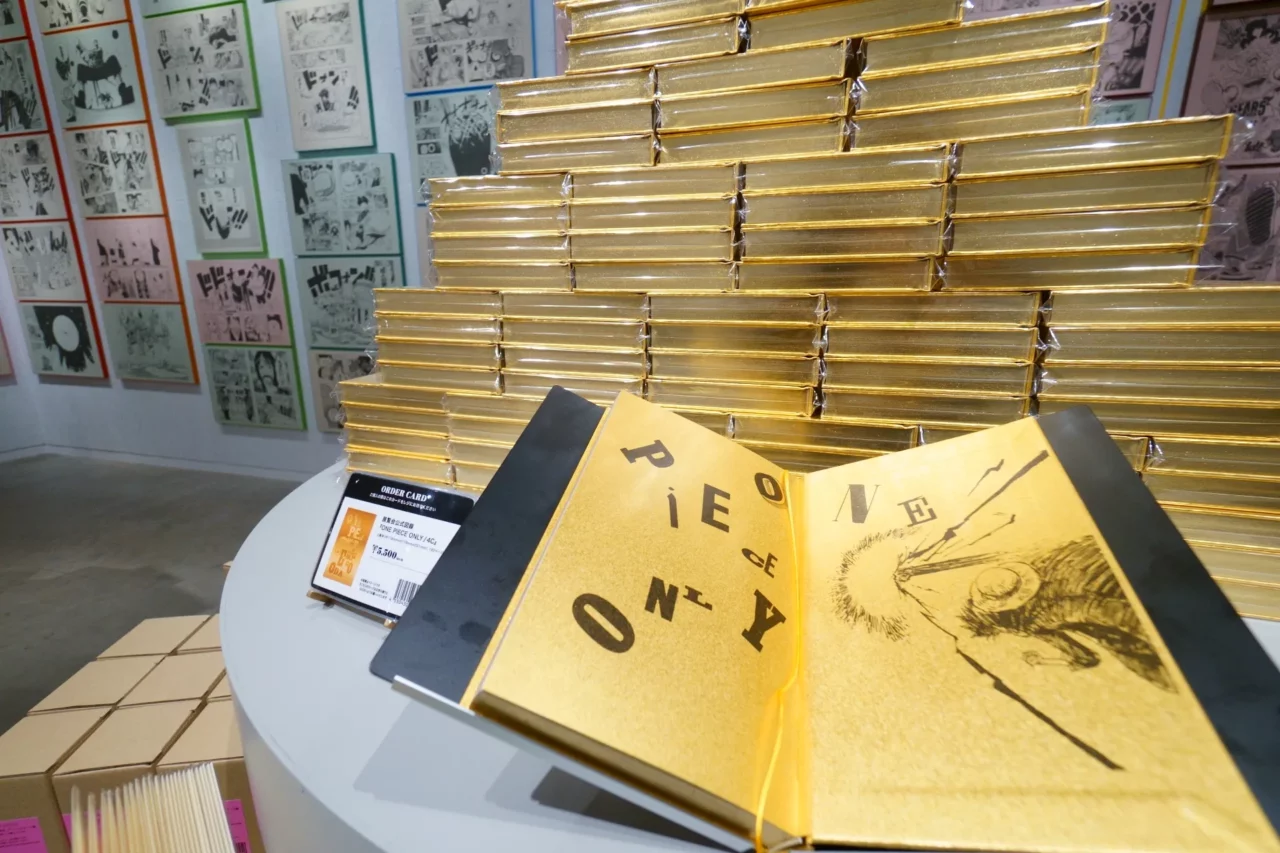
The exhibition offers ticket holders a free monochrome version of the catalog, but the full-color hardcover edition is truly something special. The cover, endpapers, and all three edges of the pages are gold, creating a luxurious finish that resembles a gold nugget. The content goes beyond simply listing the exhibits; the thoughtful editing gives it a clear sense of intention. It’s a book that feels truly worthy of being kept as a “treasure.”














